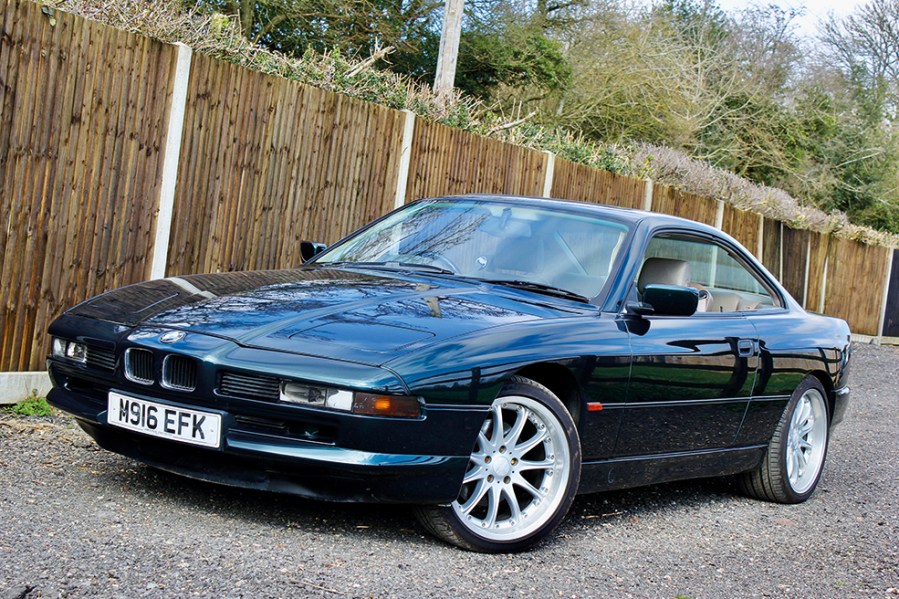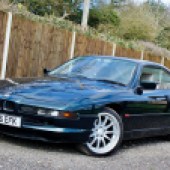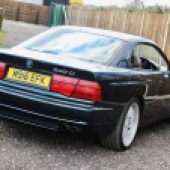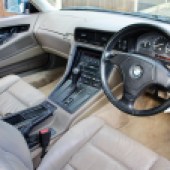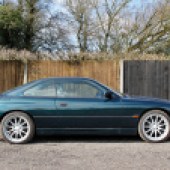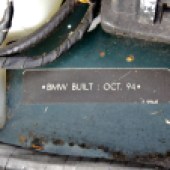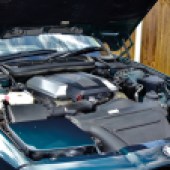Larger and more imposing than any BMW coupé before, the 8 Series wasn’t a big success. We hit the road to see how it stacks up today
Words and images: Craig Cheetham
It’s a common misconception that the BMW E31 8 Series was intended as a replacement for the 6 Series coupe, even if the start of production for the former coincided with the end for the latter.
You see, while the 6 Series was an upmarket grand tourer, it ran out of cylinders before the 8 Series even began. The new ‘8er’ was aimed at a more upmarket audience. It was a rival to the V12-engined Jaguar XJS at the top of its market (in the form of the 5.6-litre V12 850CSi) and more of a Porsche 968 challenger in 4.0-litre V8 flavour, which is what we have here.
The 840Ci was the ‘baby’ of the 8-Series range, though everything is relative and in this case ‘baby’ refers to a car that was five metres long and came with a 282bhp 4.0-litre V8 under its pointed bonnet, with pop-up headlamps and a long, pillarless profile giving it distinctively sharp looks. It joined the line-up in 1992, prior to which the 8 Series was V12 only with the 850i, a 5.0-litre V12 that accounted for more than half of total sales.
Today – thanks in part to its boldness and obscurity – the 8 Series is a rapidly appreciating modern classic, even if it was a pretty slow seller from its 1989 debut until its eventual demise a decade later. Neither sports car nor luxury GT, it fell somewhere in between. Those who knew its charms became big fans; those who didn’t missed out.
It was also one of the most aerodynamic cars ever produced, with a drag coefficient of 0.29 – the same as the slippery Vauxhall/Opel Calibra.
In total, just 30,679 8 Series were sold globally despite a 10-year production run, making it a rare car today and one that is well-loved by those who properly appreciate it, or a leftfield choice for those who might otherwise be considering something more obviously sporting. It’s hardly surprising; the 840Ci we sampled here was £56,850 new and that was 26 years ago – today, adjusted for inflation, it would be the equivalent of just under £112,000. The V12 models were even more.
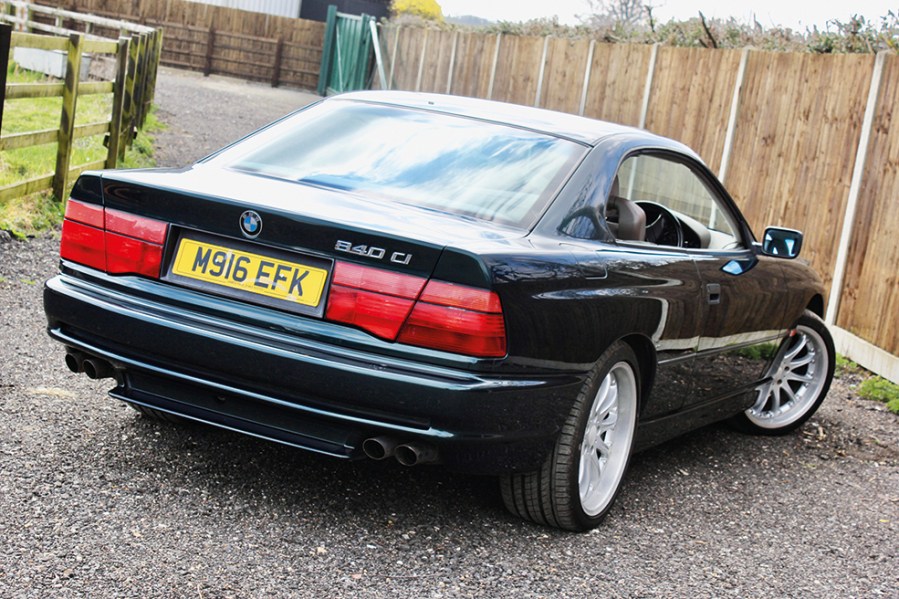
The designer credited with the appearance of the E31 is German stylist Klaus Kapitza, who on paper appears to be a bit of a one-hit wonder. The 8 Series is the only car design fully attributed to him (other than the BMW Z13 concept car) but within car design circles he’s regarded as a bit of a talent. He was poached by BMW from Ford by visionary designer Klaus Luthe in 1984, and when you dig a bit deeper into his history you’ll find he did a substantial amount of work for Ford’s Uwe Bahnsen, including most of the Mk3 Escort and the Mk3 Capri.
There’s no denying that he got it right with the 8 Series – its wedge-shaped profile and pop-up headlamps may well evoke the late 80s and early 90s in a wonderfully typical way, but it’s also a car that’s tastefully well-executed in terms of its chunkiness and overall solidity. By far the 8 Series’ best feature is its pillarless side profile. With the windows retracted, the entire side of the car is clean and clear of encumbrance. Back in 1990 it was cool but in a slightly trying-too-hard yuppie kind of way. Three decades later, it’s both cool and retro.
If you ever wanted proof that the 8-Series was a grand tourer first and sports car second, then all you have to do is open the door. The ruched leather seats, designed to cosset portly behinds, look instantly inviting, but they’re not the figure-hugging buckets you’d expect to find in a high-performance car. It’s an exceptionally comfortable car and the dash and interior layout are both intuitive and handsome, with all of the key controls exactly where you want them. The instrument binnacle will be instantly familiar to anyone who has driven a BMW saloon before.
The seat headrests incorporate the seatbelts to allow for the lack of a B-pillar. The belts are integrated into a single piece seat back that arcs round to create a ‘floating’ headrest, and while it’s clearly a functional piece of design, the form with which it is delivered is fabulous. The pillarless doors open wide to give excellent access to the rear, while those in the back are better catered-for than in most GTs thanks to the E31’s fairly long wheelbase – though everything is relative. You can get adults in there, but they’re unlikely to remain comfortable for very long. It’s a practical car, however: the boot is vast.
This is the entry-level 8 Series, so it doesn’t muster the effortless 300bhp of the big V12 – but then nor does it have such a prodigious thirst. Fire it up and it’s actually quite refined – there’s a 282bhp 4.0-litre V8 under the bonnet so it’s hardly a shrinking violet, but it doesn’t feel inherently sporty at idle. Indeed, that’s part of its appeal; when cruising around town the car is utterly effortless, the five-speed automatic transmission taking all of the effort out of piloting the big BMW through congested city streets.
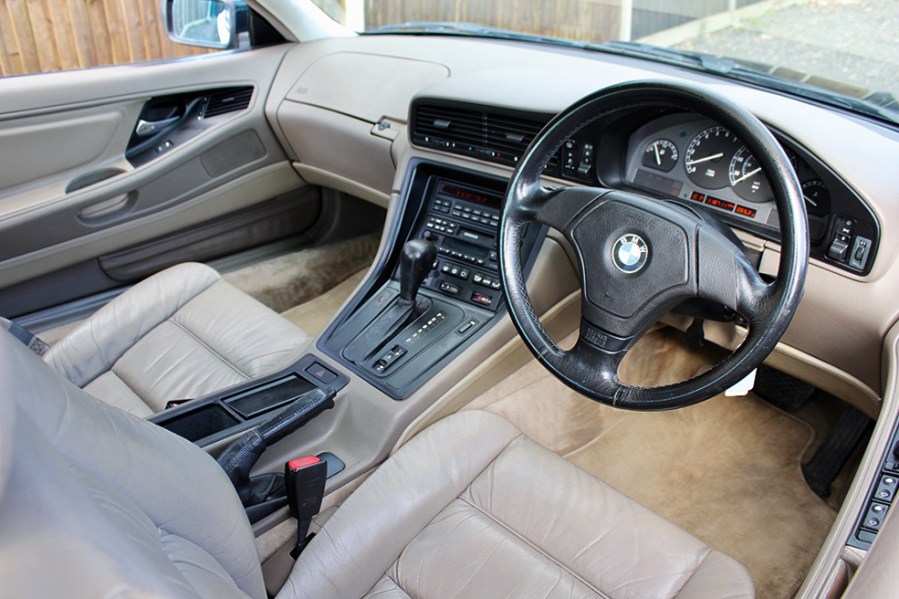
Open up the throttle and the gurgling V8 suddenly wakes up. 0-60mph in 7.0 seconds isn’t supercar quick, but it’s still pretty peppy, especially when accompanied by the bassiest of exhaust notes. Press the pedal down and the 840Ci’s refinement is flung deliberately out of the window.
The model is also regarded by many as the sweet spot of the E31 line-up. The V12 is great insofar as it does V12 things – that is, go very quickly, very comfortably, very smoothly. But the 850i was never regarded as a brilliant drivers’ car, its bulk and feeling of being ‘over-assisted’ at odds with the Ferrari Testarossa-esque side profile.
With the 840Ci, BMW had a much better-balanced car which, helped by the road-roller-sized tyres, came with tenacious levels of grip. Its bulk means that it never feels as agile as it actually is, while the steering is well-weighted and direct in the same way as in BMW’s saloon cars, making it easy to place on the road and have fun with.
Indeed, it makes you wonder why on earth the V12 was more popular in the first place.
It may be the entry 8 Series but there’s no E31 that’s ever going to be cheap to run. In terms of fuel economy, you’d be lucky to see more than 28mpg on a run, while sub-20mpg is the norm around town or when driving spiritedly. On the plus side, the 840Ci is a simpler car to maintain than the V12 850 and shares its engines with cars such as the 540i and 740i saloons. These are chain-driven, tough units that rarely give any major problems, although it’s worth looking out for a lumpy idle or slight misfire caused by vacuum leaks.
If you can be confident that an E31 is in good mechanical health, then the biggest and most important thing to check is its structural condition – they do rust, and corrosions around the back end can be enough to wipe one out, so looks very closely for scabbiness around the rear arches and reach up into the rear wheel wells to check for corrosion, especially around the rear sill ends. Unsurprisingly, the E31 is also heavy on tyres and rubber suspension components, which are prone to wear. There’s nothing of any specific concern other than to accept these as wear and tear – and all parts are still readily available – but it’s worth factoring into any buying negotiations.

BMW 840Ci: our verdict
If you want a car that is essentially the archetypal big GT of the 1990s then there are few that do it better. It has pillarless doors and pop-up headlights, so what can there possibly be not to like? The E31 is also a car that’s rapidly finding its feet in classic circles, which means that if you buy a nice one now, it should hold its value pretty firmly.
The 8 Series isn’t a sports car and historically this really counted against it, as those trading out of cars such as the Porsche 928 and to a lesser extent the Mercedes SL were left wanting. Instead, it is a fabulous GT, brimming with comfort and luxury and with performance abounding. It’s an expensive car to own and run, but it’s worth the effort.
There are three standard models in the E31 range – 840Ci, 850Ci and 850CSi, the latter of which is the ultra-high performance model and the most collectable.
You can get a pretty decent 840Ci from around £14-15k if you don’t mind it being a bit leggy; spend £20k and you’ll get behind the wheel of something really nice that won’t depreciate. It’s a heck of a lot of car for the money.

